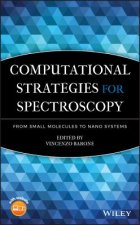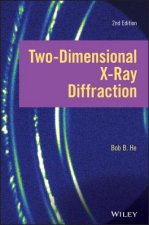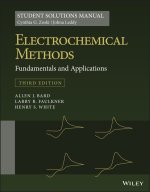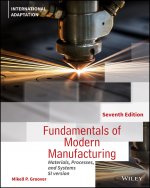
Kód: 16418304
Concise Handbook of Fluorocarbon Gases
Autor Sina Ebnesajjad
This book describes fluorocarbons gases' preparation process, properties, applications and their evolution over time. The impact of fluorocarbons on the ozone layer and global and the development to mitigate those effects have bee ... celý popis
- Jazyk:
 Angličtina
Angličtina - Vazba: Pevná
- Počet stran: 448
Nakladatelství: John Wiley & Sons Inc, 2021
- Více informací o knize

5931 Kč
Dostupnost:
50 % šance Máme informaci, že by titul mohl být dostupný. Na základě vaší objednávky se ho pokusíme do 6 týdnů zajistit.
Máme informaci, že by titul mohl být dostupný. Na základě vaší objednávky se ho pokusíme do 6 týdnů zajistit.Prohledáme celý svět
Mohlo by se vám také líbit
-

Money and Value
1174 Kč -

Accountability, Transparency and Democracy in the Functioning of Bretton Woods Institutions
5094 Kč -

Green Algae Strategy: End Oil Imports And Engineer Sustainable Food And Fuel
700 Kč -

Business Opportunities in Macedonia
460 Kč -

Android Application Pentesting Handbook
1071 Kč -

Around The Planet
363 Kč -

Klavierkonzerte 20,21 & 27
1062 Kč
Darujte tuto knihu ještě dnes
- Objednejte knihu a zvolte Zaslat jako dárek.
- Obratem obdržíte darovací poukaz na knihu, který můžete ihned předat obdarovanému.
- Knihu zašleme na adresu obdarovaného, o nic se nestaráte.
Informovat o naskladnění knihy
Zadejte do formuláře e-mailovou adresu a jakmile knihu naskladníme, zašleme vám o tom zprávu. Pohlídáme vše za vás.
Více informací o knize Concise Handbook of Fluorocarbon Gases
Nákupem získáte 593 bodů
 Anotace knihy
Anotace knihy
This book describes fluorocarbons gases' preparation process, properties, applications and their evolution over time. The impact of fluorocarbons on the ozone layer and global and the development to mitigate those effects have been specially emphasized.The first major industrial fluorinated compound was developed in the 1920's, to replace ammonia and sulfur dioxide refrigerants, at the General Motors Frigidaire Division by Thomas Midgley, Jr. and Albert Leon Henne. They developed a family of fluorocarbons trademarked Freon(r) for auto air conditioning units revolutionizing the auto industry. Other applications were developed over time including fire extinguishers, propellants, blowing agents, cleaners, anesthesia, artificial blood and others impacting every facet of life.In spite of being in broad global use for nearly a century, fluorocarbon gases have gone through great evolution during the last few decades. In the 1980s it was discovered chlorofluorocarbon (CFC) gases are harmful to the ozone layer, mainly because of their chlorine content. Chlorine was released in the upper atmosphere when chlorofluorocarbon molecules were broken down by the high energy cosmic radiation. CFCs were progressively banned following the Montreal Protocol of 1987.CFCs were replaced by fluorinated gases containing either less chlorine (hydrofluoro-chlorocarbons, or HCFCs), which are much less damaging (about 90% less) to the ozone layer or with fluorinated gases containing no chlorine, i.e. hydrofluorocarbons or HFCs. HFC have no impact on the ozone layer but impact global warming detrimentally. HFCs are usable without need for changes to the existing refrigeration or air conditioning installations. More recently hydrofluoroolefins (HFOs), which have little or no negative impact on global warming, have been developed to replace or reduce the use of HFCs. HFOs are used as single compounds or in blends. Research and development continues to develop and replace the HCFCs and HFCs completely with environmentally friendly products.Concise Handbook of Fluorocarbon Gases presents a reference and text for the commercial fluorocarbon gases which have great many application in a wide range of industries such as refrigeration and air conditioning, as well as consumer products.
 Parametry knihy
Parametry knihy
Zařazení knihy Knihy v angličtině Technology, engineering, agriculture Mechanical engineering & materials
5931 Kč
- Plný název: Concise Handbook of Fluorocarbon Gases
- Podnázev: Applications in Refrigeration and Other Industries
- Autor: Sina Ebnesajjad
- Jazyk:
 Angličtina
Angličtina - Vazba: Pevná
- Počet stran: 448
- EAN: 9781119322979
- ISBN: 1119322979
- ID: 16418304
- Nakladatelství: John Wiley & Sons Inc
- Hmotnost: 666 g
- Rozměry: 257 × 178 × 30 mm
- Datum vydání: 11. April 2021
Oblíbené z jiného soudku
-

Analysis of Electric Machinery and Drive Systems, Third Edition
4550 Kč -

Shigley's Mechanical Engineering Design, 11th Edition, Si Units
1906 Kč -

THERMODYNAMICS: AN ENGINEERING APPROACH, SI
1862 Kč -

Effective Project Management - Traditional, Agile, Extreme, Hybrid Eighth Edition
1282 Kč -

Heat And Mass Transfer, 6th Edition, Si Units
1875 Kč -

Callister's Materials Science and Engineering
1632 Kč -

Book Of Patterns For Hand-Weaving; Designs from The John Lan
804 Kč -

Wind Energy Handbook, 3rd Edition
3543 Kč -

ISE Fluid Mechanics
1872 Kč -

Handbook of Model Rocketry 7e
514 Kč -

ISE Vector Mechanics for Engineers: Statics and Dynamics
1877 Kč -

Making Small Gas-Fired Boilers for Steam Models
509 Kč -

Small Gas Engine Repair, Fourth Edition
756 Kč -

Schaum's Outline of Fluid Mechanics, Second Edition
510 Kč -

Potter's Bible
403 Kč -

Flight Craft 1: Soviet Spyplanes of the Cold War
814 Kč -

Perry's Chemical Engineers' Handbook
6309 Kč -

CIA Lockpicking Manual
319 Kč -

ISE Thermodynamics: An Engineering Approach
1797 Kč -

Introduction to Statistical Quality Control, 8th E dition EMEA Edition
1632 Kč -

Selected Poems of Rumi
146 Kč -

EDM Handbook
1371 Kč -

Marks' Standard Handbook for Mechanical Engineers
5599 Kč -

Basic Machines and How They Work
214 Kč -

Learning by Heart
482 Kč -

CATIA Core Tools: Computer Aided Three-Dimensional Interactive Application
3212 Kč -

Theory of Constraints Handbook
3937 Kč -

Solid State Physics 3e - An Introduction
1461 Kč -

Principles of Metal Casting, Third Edition
3875 Kč -

Collector's Guide to Royal Cenhagen Porcelain
1262 Kč -

Using the Project Management Maturity Model - Strategic Planning for Project Management, Third Edition
2373 Kč -

Chemistry Entrepreneurship
2868 Kč -

Computational Strategies for Spectroscopy - from Small Molecules to Nano Systems
4556 Kč -

Design, Modeling and Reliability in Rotating Machinery
6494 Kč -

Understanding Glazes
3060 Kč -

Two-dimensional X-ray Diffraction, Second Edition
4972 Kč -

Heterogeneous Catalysts - Advanced Design, Characterization and Applications
7700 Kč -

ISE Fundamentals of Thermal-Fluid Sciences
1906 Kč -

Electroplating
684 Kč -

Electrochemical Methods: Fundamentals and Applicat ions 3e, Students Solutions Manual
1875 Kč -

Fundamentals of Modern Manufacturing - Materials, Processes and Systems, 7th Edition International Adaptation
1745 Kč -

ISE An Introduction to Combustion: Concepts and Applications
2272 Kč -

Aircraft Control and Simulation - Dynamics, Controls Design, and Autonomous Systems 3e
4648 Kč -

Combustion Engines - An Introduction to Their Design, Performance, and Selection
6109 Kč -

Project Management ToolBox
2311 Kč -

Engineering Handbook
7860 Kč -

Analysis and Design of FRP Reinforced Concrete Structures
4358 Kč -

Optically Stimulated Luminescence - Fundamentals and Applications
4330 Kč -

Introduction to Materials Chemistry
3374 Kč
Osobní odběr Praha, Brno a 12903 dalších
Copyright ©2008-24 nejlevnejsi-knihy.cz Všechna práva vyhrazenaSoukromíCookies


 Vrácení do měsíce
Vrácení do měsíce 571 999 099 (8-15.30h)
571 999 099 (8-15.30h)